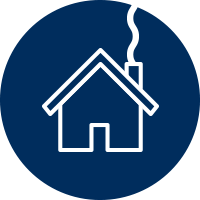

Isle of Lewis Peatland Project, Phase 2
Work entails reprofiling the ground and installing a matrix of dams to retain water on the hillside. Once the site refloods, the peaty water has a high Ph which prevents the biodegradation of organic matter. The peatland ceases to emit CO2. As such, these projects as classed as achieving an avoidance by the Peatland Code. As a bonus, the site also becomes a carbon sink via the accumulation of organic matter into the depth of the peat itself.
Restoration will hold the key to both protecting what is there and also in giving nature a helping hand to repair the erosion damage across the whole site. The extensive bog found there forms part of a characteristic suite of habitats associated with hummock and hollow topography. Some of the habitats that can be seen include mire systems, bog pool communities and both dry and wet heath habitats on the fringes.
The restoration works will halt further erosion and improve site condition. The growth of new vegetation and new species such as sphagnum moss will be encouraged. This will reduce the carbon emissions from the site and over time it is expected that the site will act as a net sink of carbon.
We expect positive impacts on biodiversity and hydrology. The filling of ditches should have a positive effect on ground nesting birds, as they are a known source of mortality in chicks. The raising of the water table should encourage further vegetation which in turn should see increased feeding opportunities for certain species.
Improved hydrology is expected to reduce flood cycles and peaks in water runoff, leading to reduce scouring of watercourse substrate and improvements in invertebrate populations. There will be the benefit of direct employment of a contactor, and it is expected that they carry out a programme of training days to demonstrate peatland restoration techniques to estate staff/local contractors.
The key objectives of the 244 hectare project are as follows:
-
Restore the site as much as possible to a functioning habitat whilst reducing methane emissions.
-
Reduce physical erosion of peat to minimise loss of particulate matter.
-
Re-wet peat where possible to reduce oxidative losses, raise the water table and encourage the future spread of vegetation.
-
Expand the extent of standing water, hold back a higher proportion of runoff and reduce the level of suspended solids in runoff.
-
Improve overall site condition, including providing long terms benefits to its biodiversity and hydrology, and facilitate improvements in overall carbon sequestration.
The key activities to be implemented are as follows:
-
Re-profiling of 5,620m of peat cuttings, 61,990m of peat haggs/gullies and 40 hectares of micro erosion features. Reprofiling will be undertaken to stabilise banks and reduce hag steepness.
-
13,502m of ditch blocking. For areas affected by drainage, raising and stabilising of water levels is the main restoration work required. The target is to block the drains in order that the water level within them can be controllably maintained at surface level.
-
Installation of 1,255 dams peat dams, 49 plastic piled dams, 28 timber damns and 250 peat bunds. Dams tend to be constructed from either highly decomposed peat or plastic piling and the exact number of dams (and their specification) will be determined by the contractor.
Opportunities for investment include:
1. Purchase of all or part of the project Pending Issuance Units
2. Front-end investment to secure all or part of the project
Please contact richard@highlandcarbon.com with the timing and quantity of your offset requirements to receive a pricing proposal and detail of associated benefits.
At a Glance: Isle of Lewis Project
Location
-
Outer Hebrides, Scotland
Offsetting Capacity
-
18,249 tCO2e; 109 Ha
Biodiversity
-
Birds: curlew, golden plover, black grouse, red grouse, greenshank, dunlin, snipe, corncrake, sandpiper, skylark, oyster catcher, merlin, peregrine falcon, golden eagle, short-eared owl
-
Terrestrial mammals: otter, water vole, red deer and more
-
Marine mammals: a range of whale and dolphin species live in the seas into which cleansed water will flow from the site
-
Fish: Atlantic salmon and sea trout
-
Flora: cotton grasses, bell heather, cross-leaved heath, bog asphodel, great sundew, butterworts, bladderworts, bogbean, bilberry and a variety of sphagnums
Project Status
-
Work commencing 2023
Sustainable Development Goals
-
Climate Action
-
Life on Land
-
Life Below Water
-
Partnerships for the Goals
Recognised Offsetting Framework
Peatland Code
Recognised Offset Standards
Pending Issuance Units (PIUs) becoming Peatland Carbon Units (PCUs)



